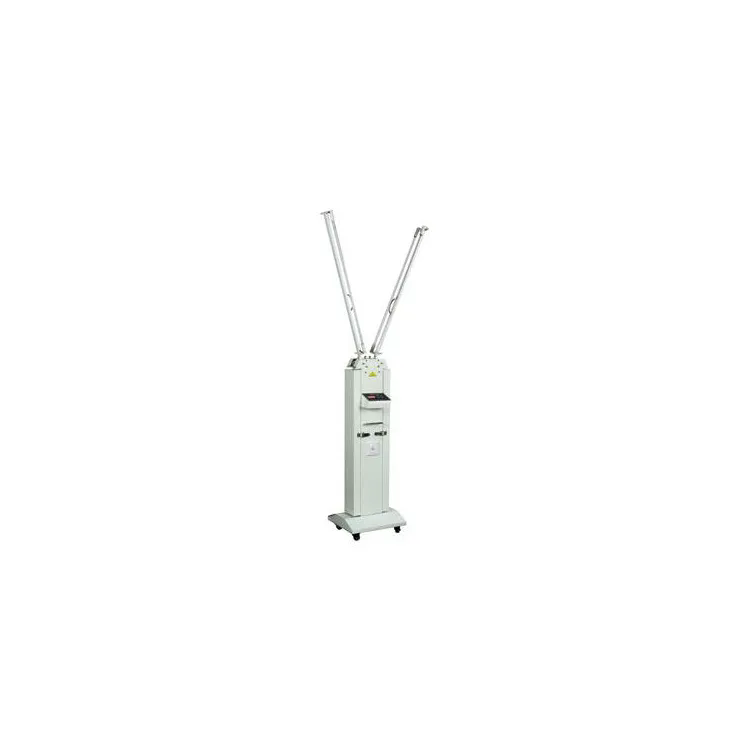Enhancing Healthcare Safety: The Role of Hospital Medical UV Room Sterilizers
2024-09-24
In the wake of the COVID-19 pandemic and the growing emphasis on infection control in healthcare settings, hospitals and medical facilities are increasingly turning to innovative technologies to ensure patient safety. One such advancement is the hospital medical UV room sterilizer. These devices utilize ultraviolet (UV) light to disinfect and sterilize rooms, equipment, and surfaces, effectively reducing the risk of hospital-acquired infections (HAIs). In this blog, we’ll explore how UV sterilizers work, their benefits, and their importance in maintaining a safe healthcare environment.
Understanding UV Room Sterilizers
UV room sterilizers operate on the principle that ultraviolet light can disrupt the DNA or RNA of microorganisms, rendering them incapable of reproduction and infection. There are three main types of UV light:
1. UVA: Often used in tanning beds and is the least effective for disinfection.
2. UVB: Used in phototherapy but is not commonly used for sterilization.
3. UVC: The most effective type for disinfection, typically used in medical settings.
How Do UV Room Sterilizers Work?
Hospital medical UV room sterilizers emit UVC light at specific wavelengths that are lethal to bacteria, viruses, and other pathogens. The process typically involves the following steps:
1. Preparation: The room is cleared of people, and any surfaces to be sterilized are prepared.
2. Deployment: The UV sterilizer is positioned in the room, often in a mobile unit that can be moved to different areas as needed.
3. Sterilization: The device emits UVC light for a predetermined duration, allowing sufficient time for the light to penetrate surfaces and effectively kill pathogens.
4. Completion: After the sterilization cycle is complete, the room can be safely re-entered.
Benefits of Hospital Medical UV Room Sterilizers
1. Effective Disinfection: UV sterilizers can significantly reduce the microbial load in a room, helping to eliminate pathogens that traditional cleaning methods may miss.
2. Rapid Sterilization: UV disinfection can be completed in a matter of minutes, allowing for quicker turnaround times between patient visits or procedures.
3. Reduced Chemical Use: Unlike chemical disinfectants, UV sterilizers do not leave harmful residues, making them a safer option for both patients and staff.
4. Versatility: UV sterilizers can be used on a variety of surfaces, including floors, walls, and equipment, making them a comprehensive solution for infection control.
5. Compliance with Health Standards: Many healthcare facilities are required to adhere to strict infection control guidelines. Using UV sterilizers can help meet these standards and improve overall safety.
Importance in Healthcare Settings
The importance of hospital medical UV room sterilizers cannot be overstated, particularly in light of the ongoing challenges posed by infectious diseases. Here are some key reasons why these devices are essential:
1. Preventing HAIs: Hospital-acquired infections are a significant concern in healthcare. UV sterilizers provide an additional layer of protection against these infections, helping to safeguard patients, especially those with compromised immune systems.
2. Enhancing Patient Confidence: Patients are more likely to feel secure in a healthcare facility that employs advanced sterilization technologies. This confidence can lead to increased patient satisfaction and trust in the healthcare system.
3. Supporting Infection Control Protocols: UV sterilizers complement existing cleaning protocols by ensuring that hard-to-reach areas and high-touch surfaces receive adequate disinfection.
4. Adaptability: With the rise of new infectious diseases, hospitals need to be adaptable. UV sterilizers can be easily integrated into existing infection control measures and can be used in various healthcare settings, from operating rooms to patient rooms.
Considerations When Using UV Room Sterilizers
While UV sterilizers offer many benefits, there are important considerations for their effective use:
1. Safety Precautions: UVC light can be harmful to skin and eyes, so it’s crucial to ensure that the room is unoccupied during sterilization.
2. Training: Staff must be trained on the proper operation of UV sterilizers and the importance of following manufacturer guidelines for effective use.
3. Complementing Other Practices: UV sterilization should be used in conjunction with traditional cleaning and disinfection methods for optimal results.
Conclusion
As healthcare facilities strive to enhance safety and reduce the risk of infections, hospital medical UV room sterilizers emerge as a vital tool in the fight against pathogens. Their effectiveness, speed, and versatility make them an essential part of modern infection control strategies. By investing in UV sterilization technology, hospitals can not only protect their patients but also improve overall healthcare outcomes in a post-pandemic world. Embracing these innovations is a step toward a safer, healthier future for all.



